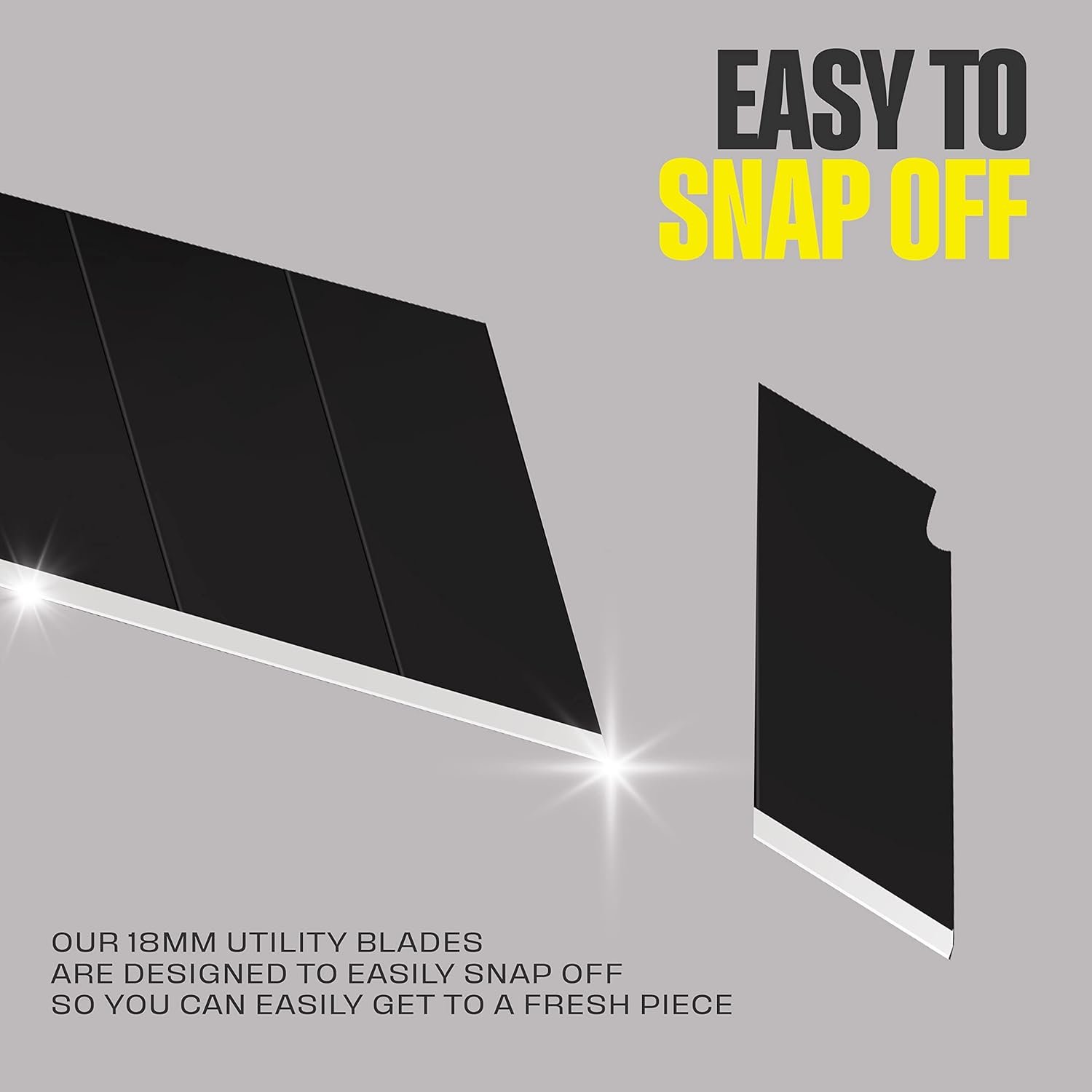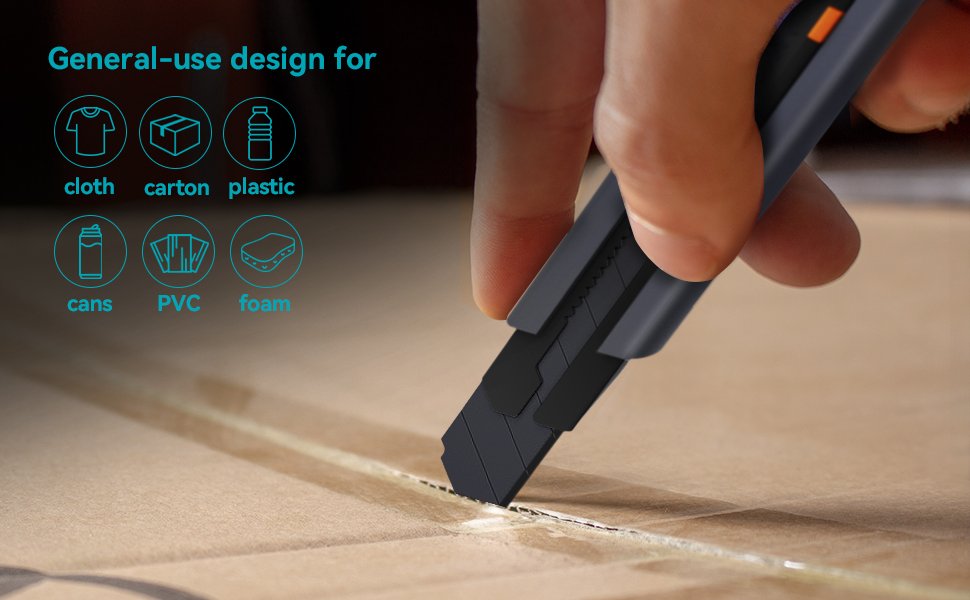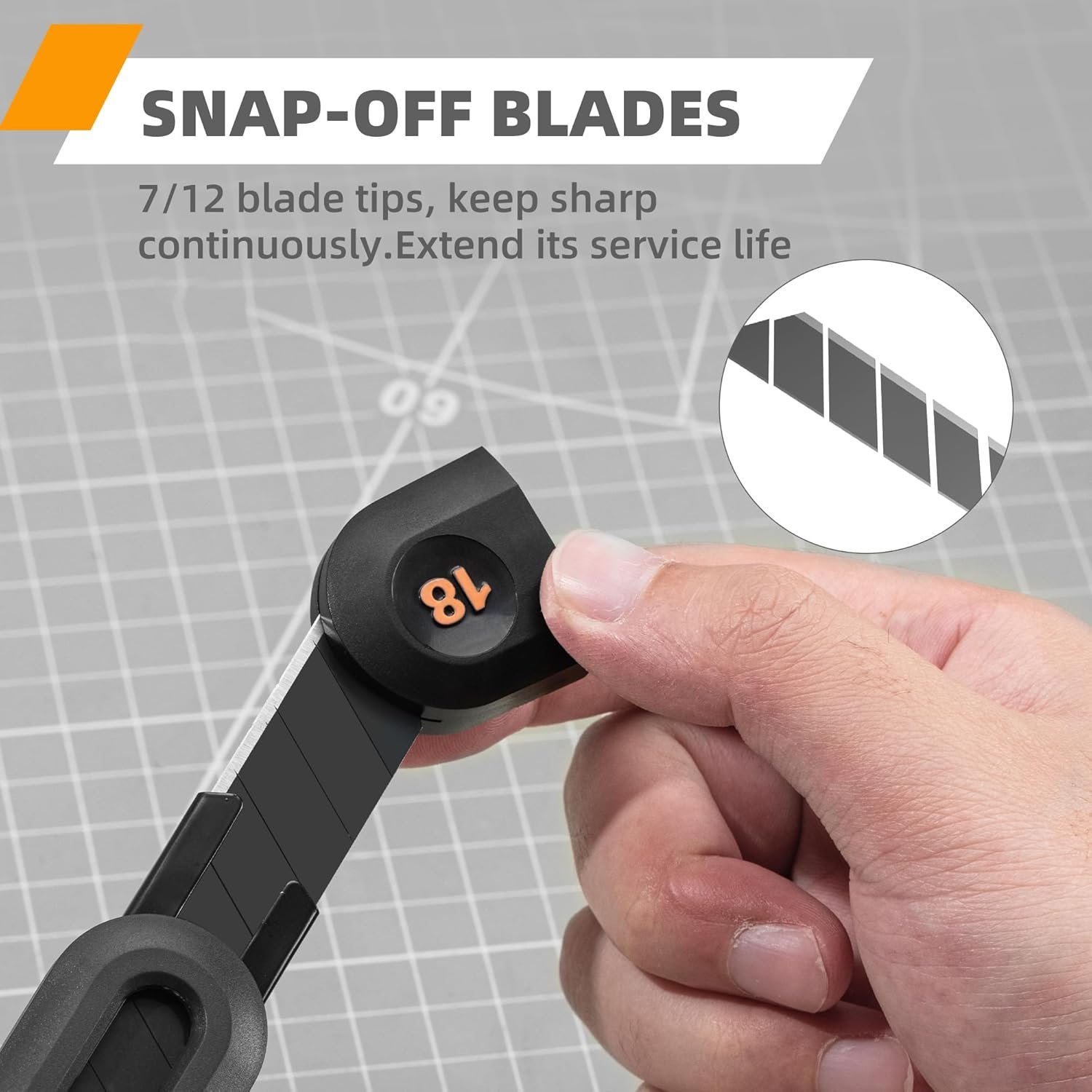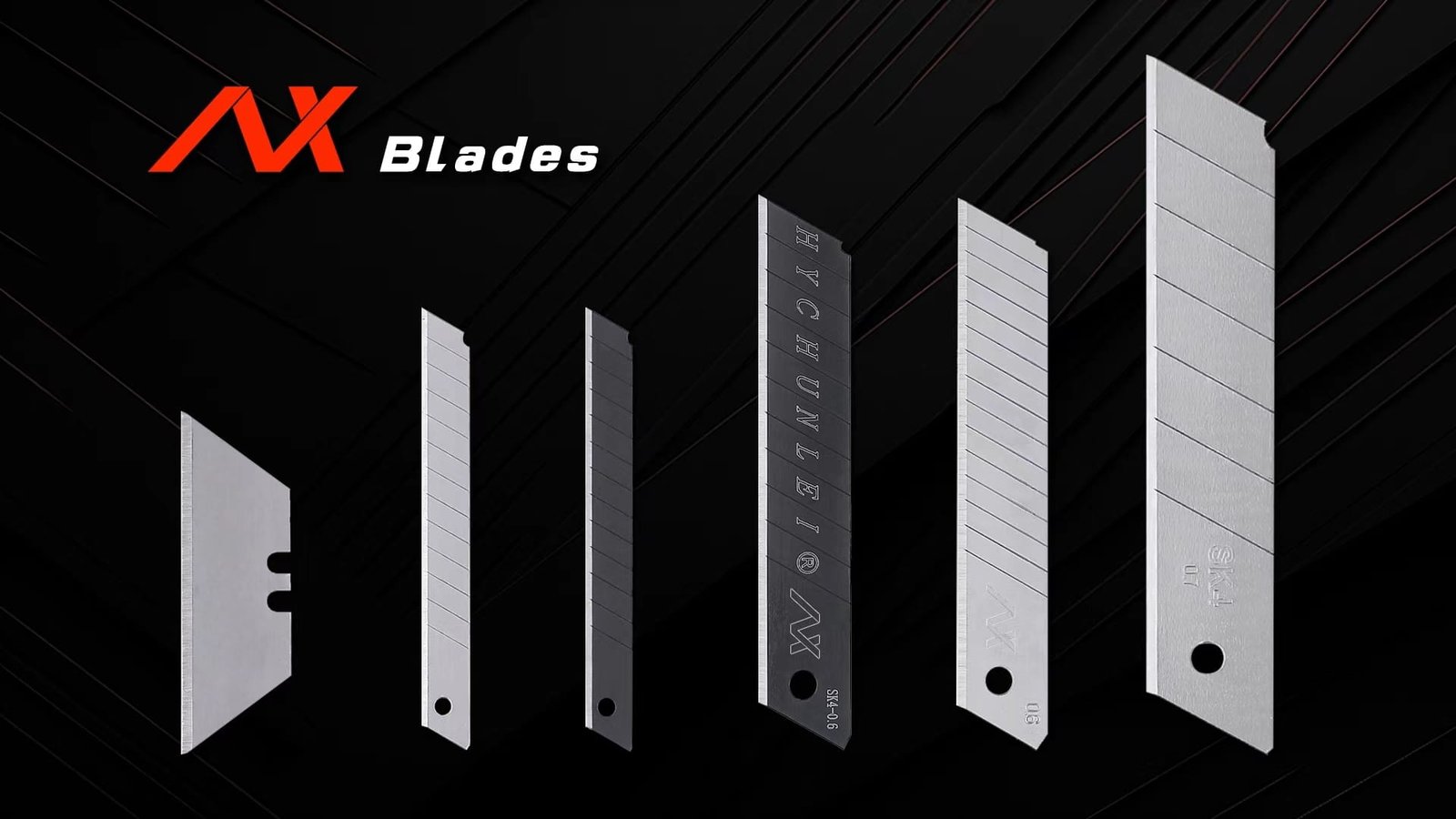Snap-off knife blades are indispensable tools for a wide range of applications, offering precision and efficiency in various industries. Whether you’re working in construction, packaging, or crafting, these blades allow for quick, clean, and accurate cuts, making them a must-have in your toolkit. Manufactured by leading companies like Nxtools, these blades are designed for durability, ease of use, and long-lasting performance. This article explores the different types of snap-off knife blades, their uses, and the benefits of choosing high-quality blades for your cutting tasks.
What Are Snap-Off Knife Blades?
Snap-off knife blades are utility blades divided into multiple segments that can be “snapped” off when the blade becomes dull. Each segment is designed to be broken off easily with minimal effort, revealing a fresh, sharp edge underneath. This process allows for continuous cutting without the need for full blade replacements, making snap-off knives highly efficient and cost-effective. This feature is particularly useful for tasks that require frequent or prolonged cutting, as it minimizes downtime and ensures optimal performance throughout.

Key Features and Benefits of Snap-Off Knife Blades
- Cost-Effectiveness: Snap-off knife blades are designed to be used for extended periods. Instead of discarding the entire blade when it becomes dull, users can simply snap off the worn segment. This saves money by reducing the frequency of full blade replacements, especially in industries where blades are used constantly.
- Convenience: One of the primary advantages of snap-off blades is convenience. When a blade becomes dull, users do not need to search for a new blade or tool. They can quickly snap off the old section, which enhances productivity and ensures that work can continue without significant delays.
- Versatility: Snap-off knife blades are available in a variety of sizes and materials, catering to different cutting needs. These blades are suitable for both light-duty and heavy-duty tasks, making them versatile for use in industries ranging from construction to arts and crafts.
- Precision Cutting: Snap-off knife blades provide clean, straight cuts, making them ideal for precise cutting tasks. Whether you’re trimming packaging materials, cutting drywall, or performing delicate crafting work, the sharpness of the new blade section ensures a high level of precision.
- Ergonomics: Many snap-off knives are designed with ergonomic handles to ensure comfort during use. The handles are often crafted with anti-slip materials, providing better control over the blade and reducing hand fatigue, especially during long or repetitive cutting tasks.

Applications of Snap-Off Knife Blades
Snap-off knife blades are widely used in various sectors due to their versatility and reliability. Below are some of the most common applications for these blades:
- Construction: In the construction industry, snap-off knives are frequently used to cut materials such as drywall, insulation, and carpet. The sharpness and precision of the blade make them perfect for these tasks, ensuring clean cuts without damaging the materials.
- Packaging: Snap-off knife blades are ideal for opening boxes, cutting through packaging materials, and trimming excess plastic wrap. Their sharp edges make it easy to cut through various materials, from cardboard to plastic sheeting, without struggling or causing damage.
- Crafting: In the world of crafting, snap-off knives are used for detailed cutting tasks such as paper trimming, model making, and art projects. The ability to expose a new sharp edge by snapping off the worn section is particularly beneficial for intricate and precise cutting in arts and crafts.
- Textile Industry: Snap-off knife blades are also used in the textile industry for cutting fabric. The versatility of these blades allows them to cleanly slice through different types of textiles, making them a valuable tool for both production lines and tailoring.
- Leather Working: For those in leather crafting or upholstery, snap-off knife blades offer clean, precise cuts on leather materials. Whether it’s for pattern cutting or detailed trimming, the sharpness and ease of changing blades make snap-off knives essential tools in the leatherworking industry.

How to Choose the Right Snap-Off Knife Blade
When choosing the right snap-off knife blade for your needs, several factors should be taken into account. The wrong choice can lead to inefficiency and poor cutting results. Here are the key considerations:
- Blade Size: Snap-off blades come in various sizes, with the most common being 9mm, 18mm, and 25mm. The size of the blade you need will depend on the nature of your cutting task. For lighter, more detailed tasks, a 9mm blade may be sufficient, while larger tasks like cutting through thick materials may require a 18mm or 25mm blade.
- Material: The material of the blade plays a significant role in its performance. High-carbon steel blades are known for their durability and sharpness, while stainless steel blades offer rust resistance, which is ideal for use in humid or wet environments. The material will also influence the lifespan of the blade and how often it needs to be replaced or snapped off.
- Blade Thickness: Blade thickness can affect the overall sturdiness of the blade. Thicker blades are generally more suitable for heavy-duty cutting tasks, while thinner blades are better for light-duty or more intricate cutting work.
- Handle Design: The design of the handle can make a big difference in terms of comfort and control. Ergonomic handles with anti-slip features allow for better grip, reducing the chances of accidents and providing comfort during prolonged use. Ensure that the handle fits comfortably in your hand to avoid hand strain during repetitive tasks.
- Compatibility: It’s important to ensure that the snap-off blade you choose is compatible with your utility knife. Not all snap-off blades fit all knives, so double-checking the compatibility will save you time and effort.
@nx.tools Conventional knife blade products, in addition to customizable molds to meet your needs. #utilityknifeblades #nxtools #bladefactory #knifebladesupplier #China ♬ 原创音乐 – Nx Tools
Safety Considerations When Using Snap-Off Knife Blades
While snap-off knives are useful, safety should always be a priority. Here are some important safety tips:
- Proper Handling: Always hold the knife securely by the handle and use the blade in a controlled manner. Avoid using excessive force, as this could cause the blade to snap unexpectedly.
- Proper Storage: Keep your snap-off knives in a safe place when not in use. Store them in protective cases or in a tool drawer to avoid accidental cuts when reaching for them.
- Inspect the Blade Regularly: Before using your snap-off knife, inspect the blade to make sure it’s properly secured and free of cracks or damage. If the blade appears worn, snap off the dull section before using it.
- Keep the Work Area Clean: Ensure that your work area is clean and free of obstacles that could cause accidents. A cluttered space can lead to distractions, making it more difficult to focus on the task at hand.
- Dispose of Used Blades Safely: Always dispose of used snap-off blade segments in a safe manner. Blade disposal containers are available to ensure that used segments are safely discarded without posing a risk to others.

Maintenance Tips for Snap-Off Knife Blades
To ensure the longevity of your snap-off knife blades, regular maintenance is necessary. Here are some tips:
- Use Proper Cutting Surfaces: Always use a cutting surface that won’t dull the blade too quickly. Self-healing cutting mats are ideal for preserving the sharpness of your blade and providing a smooth cutting experience.
- Avoid Excessive Force: Using too much force when cutting can cause the blade to snap prematurely. Apply consistent and moderate pressure to ensure the longevity of the blade.
- Keep the Blade Clean: After use, clean the blade to remove debris and residues that could affect its performance. Regular cleaning prevents build-up, ensuring that the blade remains sharp and ready for use.
Conclusion
Snap-off knife blades are essential tools for precision cutting across a wide range of industries. Whether you’re working on a construction project, crafting intricate designs, or simply opening packages, snap-off knives provide clean, sharp cuts with minimal effort. Choosing the right blade based on size, material, and handle design can make a significant difference in your cutting efficiency. With safety and maintenance in mind, snap-off knife blades are an invaluable asset to anyone seeking accuracy and cost-effectiveness in their cutting tasks.
Frequently Asked Questions
- How do I replace a snap-off knife blade?
- To replace a snap-off knife blade, extend the blade fully, snap off the dull segment, and retract the blade to expose a fresh edge.
- Are snap-off knife blades suitable for heavy-duty cutting?
- Yes, snap-off knife blades are available in heavy-duty versions designed for demanding tasks.
- Can I use snap-off knife blades for cutting metal?
- Snap-off knife blades are generally not suitable for cutting metal; specialized blades are recommended for such tasks.
- How can I prevent my snap-off knife blade from rusting?
- Regularly clean and dry the blade after use, and store it in a dry environment to prevent rusting.
- What should I do if my snap-off knife blade becomes dull?
- Simply snap off the dull segment to reveal a new sharp edge, ensuring continued cutting efficiency.

